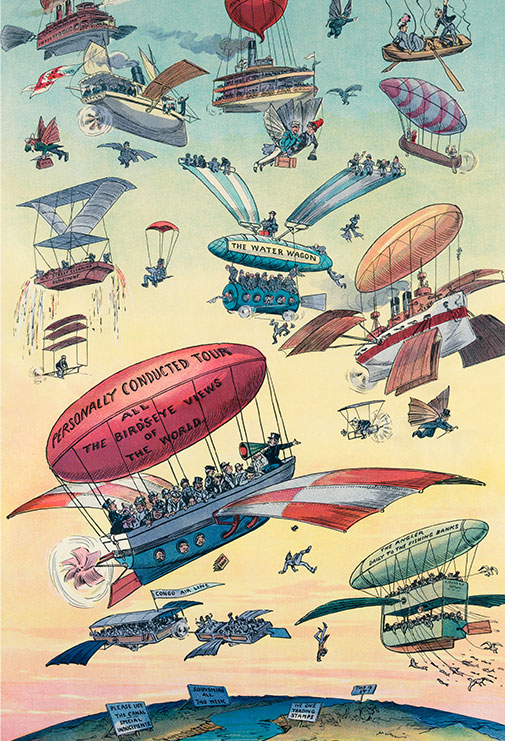- Vol. 08
- Chapter 01
A HISTORY OF AVIATION PART 73
As a consequence of the Great Cataclysm and its associated worldwide economic crash all state and commercial airlines were either bankrupted or rendered non-viable. Air fleets were initially grounded and mothballed but then left to rust and fall apart as global Green Recovery programmes gathered momentum. By the time people were ready to once again get up close and personal with scores of strangers in confined spaces, the jet engine had had its day. As fossil fuel production dwindled, any resurrection of the passenger air industry had to languish at the back of queue. While many people were happy to regard air travel as a thing of the past others started to look into that same past for inspiration. A new wave of entrepreneurs began to channel the spirit of the early twentieth century pioneers who had taken to the skies on a wing and a prayer. No design was too outlandish, no technology too obsolete to be dusted off and hastily written up in a business plan. Hot air and old school aerodynamics became the chief weapons in this new battle to overcome gravity. Within a few years, the troposphere was filled with all manner of unregulated flying contraptions, a large proportion of which were both unstable and uncontrolled.
Even if these machines had been capable of following a steered course, rather than being at the mercy of prevailing winds, a state of carnage would still have been inevitable given the lack of Air Traffic Control. As the death toll escalated, governments were left with no choice but to implement a ban on all flights of any kind. Inexorably, this opened the door for state sponsorship on a massive scale to be deployed to reboot national aerospace industries and it was only a matter of time before tanker lorries full of chemicals were rolling into the dormant airports to start defoliating their runways.

